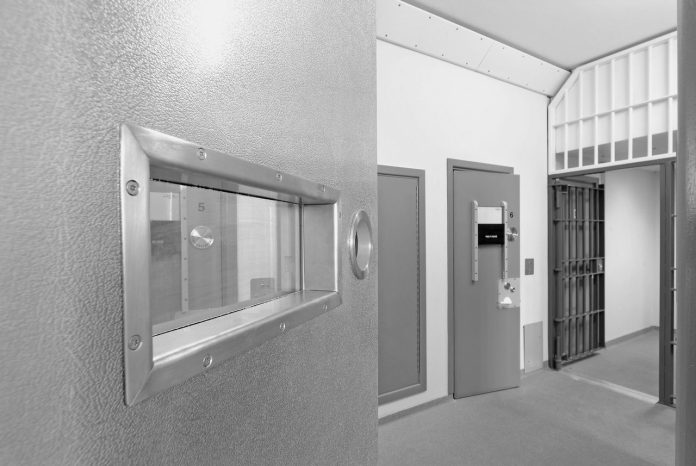Broken security rarely announces itself with alarms and flashing lights—it’s quiet, gradual, and often hiding in plain sight. Detention center doors might look strong, but even the toughest steel can be compromised by overlooked hardware or faulty installs. This post unpacks the weak spots detention equipment contractors know too well and how smart fixes are helping secure modular jails across the country.
Addressing Loose Hinges to Prevent Forced Entry Vulnerabilities
Loose hinges might seem minor, but they’re one of the fastest ways detention center doors become vulnerable. Over time, the constant tension from repeated openings, heavy door weight, and poor hinge placement can loosen even industrial-grade doors. This allows gaps to form—big enough to insert tools or even pry the door off its frame. In high-risk environments like correctional facilities, that’s a clear invitation to breach.
Security detention equipment contractors typically reinforce hinges with welded-on security pins or hinge bolts that can’t be removed externally. In modular jails, contractors may also install hinge covers that shield the hinge barrel from tampering. Regular hinge inspections are key, especially in older facilities, where wear can go unnoticed until a serious issue arises.
How Do Inadequate Locking Mechanisms Compromise Door Security?
Locks do more than secure—they signal control. A lock that slips, jams, or misaligns turns into a weak point fast. In detention centers, older locking systems with outdated mechanical parts or loose internal components often fail under stress or manipulation. Inmates and insiders with time and tools can exploit these flaws before staff even notice a problem.
High-security detention equipment contractors are moving away from basic locking designs and replacing them with integrated locking mechanisms that connect to centralized control systems. These newer systems use electromagnetic force, tamper-proof lock housings, and audit-trail capability to detect unauthorized attempts. For modular jails, this integration is streamlined during construction, making it easier to upgrade systems over time.
Reinforcing Weak Door Frames to Resist Breach Attempts
The door is only as strong as the frame it’s bolted to. Detention center doors can withstand blunt force, but if the frame bends, warps, or cracks, forced entry becomes easier. Cheap steel or lightweight aluminum frames buckle under repeated pressure—especially from the inside where constant slamming can weaken anchor points.
Security detention equipment contractors often reinforce door frames with deep-set anchor bolts, multi-layered steel, and concrete infill. This adds weight, stability, and resistance to impact. In modular jails, welded steel frame systems can be integrated directly into prefabricated walls, giving both the frame and wall equal resistance. It’s an investment in structural strength that prevents future breaches.
Common Issues with Improper Installation and Proven Solutions
Improper installation might not be obvious on day one, but over time, it leads to gaps, misalignment, and failing locks. Doors that don’t sit square in their frame tend to drag, squeak, or even fail to latch securely. This isn’t just a maintenance headache—it’s a security hole. For detention center doors, poor installation can create escape routes or even prevent emergency access.
Trusted detention equipment contractors follow precision installation protocols using laser alignment, industrial-grade shims, and high-strength grout to ensure long-term durability. In modular jails, the benefit is even greater—installations are controlled in a factory setting where tolerances can be tighter and pre-testing ensures fewer field issues. Done right, a proper install means less stress on locks, hinges, and staff.
Why Regular Maintenance Reduces Door Hardware Failures
Locks stick. Hinges wear. Electronics glitch. And if regular maintenance isn’t part of the plan, these small failures pile up into security liabilities. Maintenance often takes a backseat in older facilities or understaffed environments, but it’s one of the simplest ways to extend the life of detention center doors.
For modular jails and traditional facilities alike, a good maintenance schedule includes lubricating locks, checking hinge tension, tightening fasteners, and testing electronic systems. Detention equipment contractors recommend monthly walk-throughs and annual deep service routines. This hands-on approach catches problems early, avoids unexpected downtime, and helps maintain compliance with security standards.
Correcting Poor Door Alignment to Eliminate Security Gaps
Even a small misalignment in a detention door can lead to serious gaps—ones wide enough for improvised tools, paper clips, or worse. Poor alignment often stems from settling foundations, damaged hinges, or incorrect initial measurements. These problems don’t just affect door function—they compromise the entire security system by leaving access points exposed.
Security detention equipment contractors use laser levels and adjustable hinge systems to realign problem doors without full replacements. In modular jails, the benefit is even stronger because the environment allows tighter control during construction, reducing post-installation shifting. Realigning a door also brings other benefits: better lock engagement, reduced wear on parts, and quieter operation.
Effective Methods to Enhance Resistance Against Tampering Attempts
Tampering is clever, constant, and often invisible until it’s too late. Detention center doors are a favorite target for manipulation—especially at the edges, locks, and control boxes. Common tools include bent metal, plastic strips, or even toothpaste caps. Without tamper-resistant features, doors become puzzles waiting to be solved.
Today’s top detention equipment contractors are integrating anti-tamper guards, reinforced strike plates, and encased locking systems into both new builds and retrofits. For modular jails, these features are designed from day one, ensuring consistency across the entire unit. Combined with regular inspections and staff awareness, these methods build a solid defense that holds up under real-world pressure.



